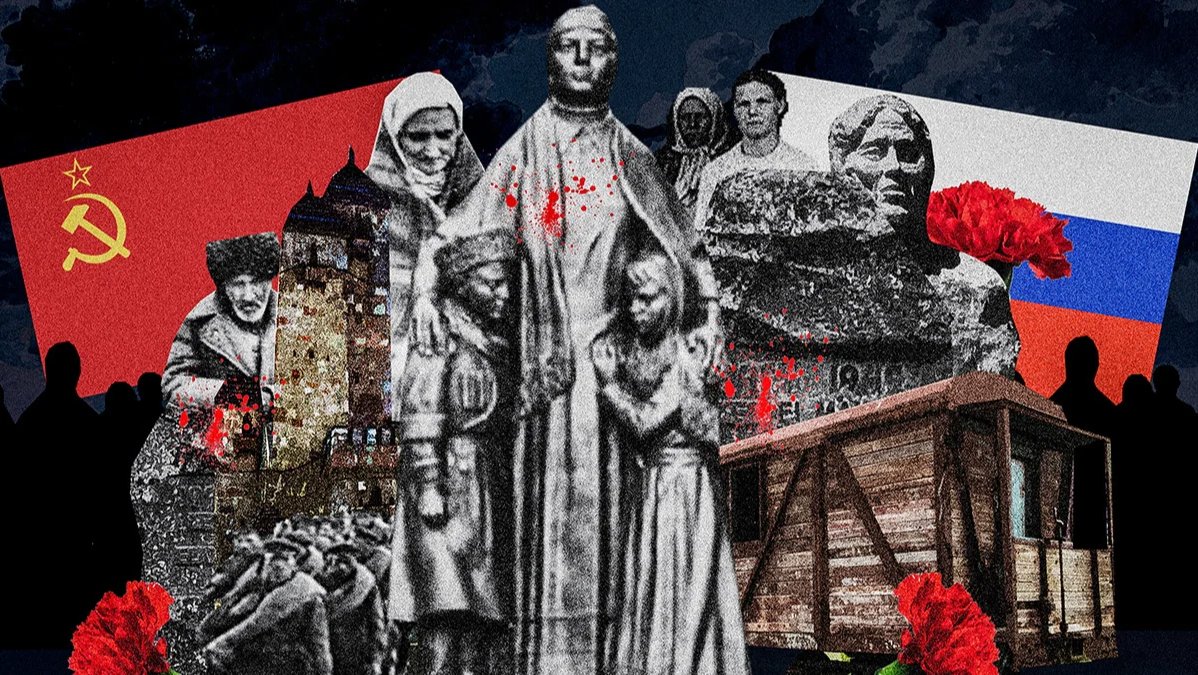When German forces invaded the Caucasus in July 1942 as part of Operation Edelweiss, Hitler’s plan to secure vital oil fields in the area to fuel his war machine, millions of Soviet citizens suddenly found themselves living under Nazi occupation. However, the Soviet victory at Stalingrad the following year forced the Wehrmacht to retreat in early 1943, and the Caucasus was recaptured by the Red Army, after which harsh recriminations against anyone suspected of collaboration got underway.
Accused en masse of pro-German sympathies and collaboration, the entire Soviet population of Karachay, Balkars, Ingush, Chechen, Kalmyks, and Crimean Tatars were deported to Siberia and Central Asia between 1943 and 1944 in an unprecedented act of collective punishment. The deportations were ordered by an increasingly paranoid Josef Stalin who feared the historical grievances of non-Russian ethnic minorities might lead to further collaboration with foreign powers and disloyalty to the Soviet government.
According to the Soviet government, 10% of the 183,000 Crimean Tatars served in German battalions, while Crimean Tatar activists today say that there were just 800 willing collaborators. As punishment, on 18 May 1944, 80 years ago today, the entire Crimean Tatar ethnic group in the Soviet Union was deported to Uzbekistan. Officially, one fifth of those deported died within the next year and a half, although activists claim that in reality almost half of them perished in the deportations, which were implemented in extremely harsh and brutal conditions and led to immense suffering, cultural dislocation and the dispossession of the Crimean Tatars’ traditional lands.
Still little known in the wider world, Stalin’s mass deportations of entire ethnic groups remains one of the darkest chapters of Soviet history. Shockingly, the Russian government continues to use the collective memory of these crimes against non-ethnic Russian minority groups to serve its own political agenda.
The scale of the crime
In his 2001 work, Against Their Will, Russian historian Pavel Polian estimated that almost half a million Chechens and Ingush had been deported to Siberia and Central Asia within a matter of weeks in February and March 1944 in an act of unprecedented collective punishment for their supposed mass collaboration with the Nazis.
As punishment, on 18 May 1944, the entire Crimean Tatar ethnic group in the Soviet Union was deported to Uzbekistan.
But they were not the only ethnic groups subject to mass deportations. The Karachays, an Turkic ethnic group native to the North Caucasus, were first. The NKVD, the Soviet ministry responsible for security and law enforcement, purged the entire people, almost 70,000 in number, in November 1943. Even 2,500 Karachay Red Army soldiers were demobilised and sent to the gulag.
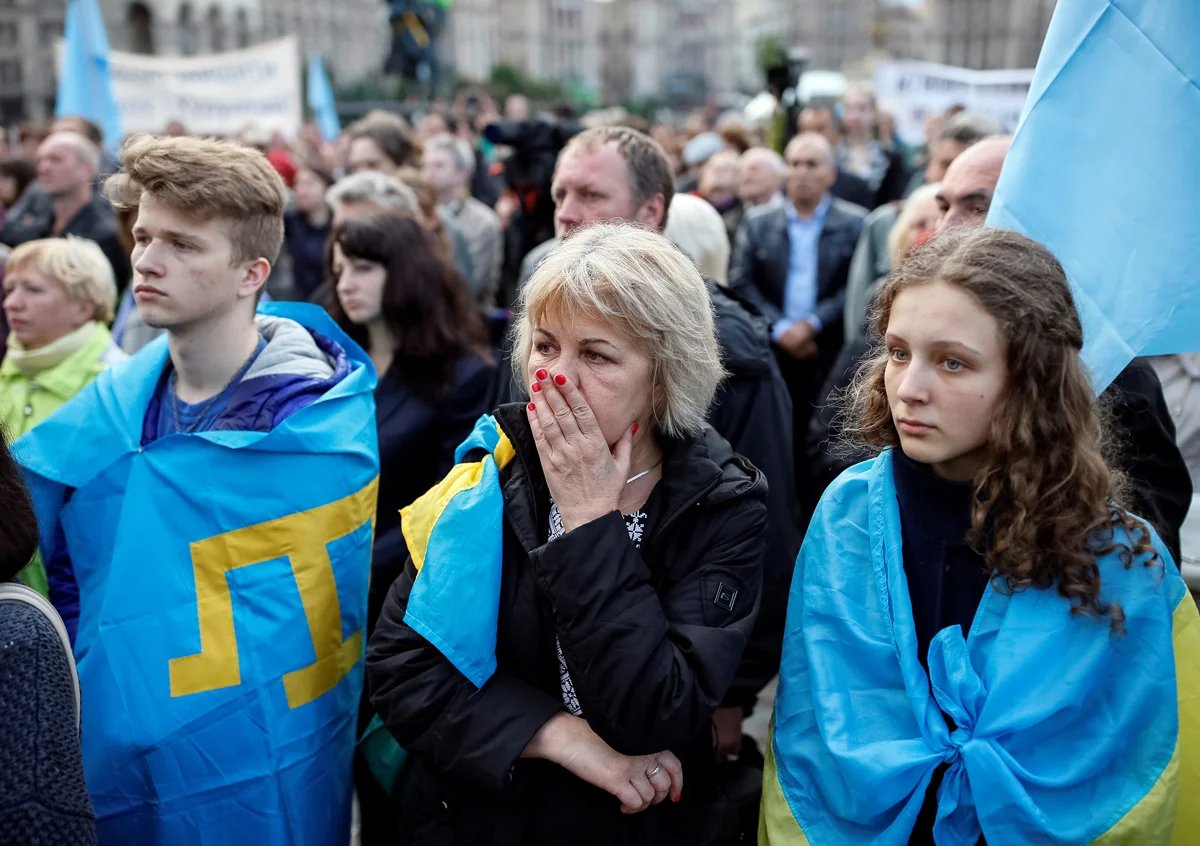
Demonstrators mark the anniversary of the 1944 deportation of the Crimean Tatars to Central Asia, Independence Square, Kyiv, on 18 May 2016. Photo: Hleb Haranych / Reuters / Scanpix
Then they came for the Kalmyks, the only Mongolic-speaking people in Europe, 93,000 of whom were exiled between December 1943 and January 1944. A further 4,100 Kalmyks were rounded up from other Russian regions and also deported. In March 1944, it was the turn of the Balkars — another Turkic ethnic group native to the North Caucasus — all 37,000 of them. And in May 1944, 80 years ago this month, 191,000 Crimean Tatars were deported en masse to Central Asia.
Add to that the 905,000 ethnic Germans who found themselves “preemptively” deported and the Finns of Ingria, in northwestern Russia, and the ethnic Greeks, that is another 1.2 million people. There were also mass deportations, with ethnic overtones, from annexed areas of Poland, the occupied Baltic States and Moldova.
Initially “preventative” measures, carried out in 1940 and 1941, they were carried out once again after the territories were recaptured from the Nazis. And beyond World War II, dekulakisation, the early 1930s Soviet campaign against the so-called kulaks — prosperous peasants — and other forced relocations put the total number of deportees between 1920 and 1953 at 6 million people.
Deported forever
In 1948, the Soviet government decreed all wartime deportations to be permanent and stipulated that any attempt on the part of deportees to leave their newly designated homes would be punished by a 20-year stint in the gulag. Humiliation, torture and starvation were followed by high levels of mortality and discrimination. In the Soviet Central Asian republics of Kazakhstan and Kyrgyzstan, rumours circulated that the Chechens and Ingush were criminals and cannibals. In June 1951, shortly before the Muslim holy month of Ramadan, a rumour spread in the Kazakh town of Leninogorsk — now Ridder — that the Chechens were using the blood of babies in their rituals, leading to a pogrom. Such incidents recurred many times.
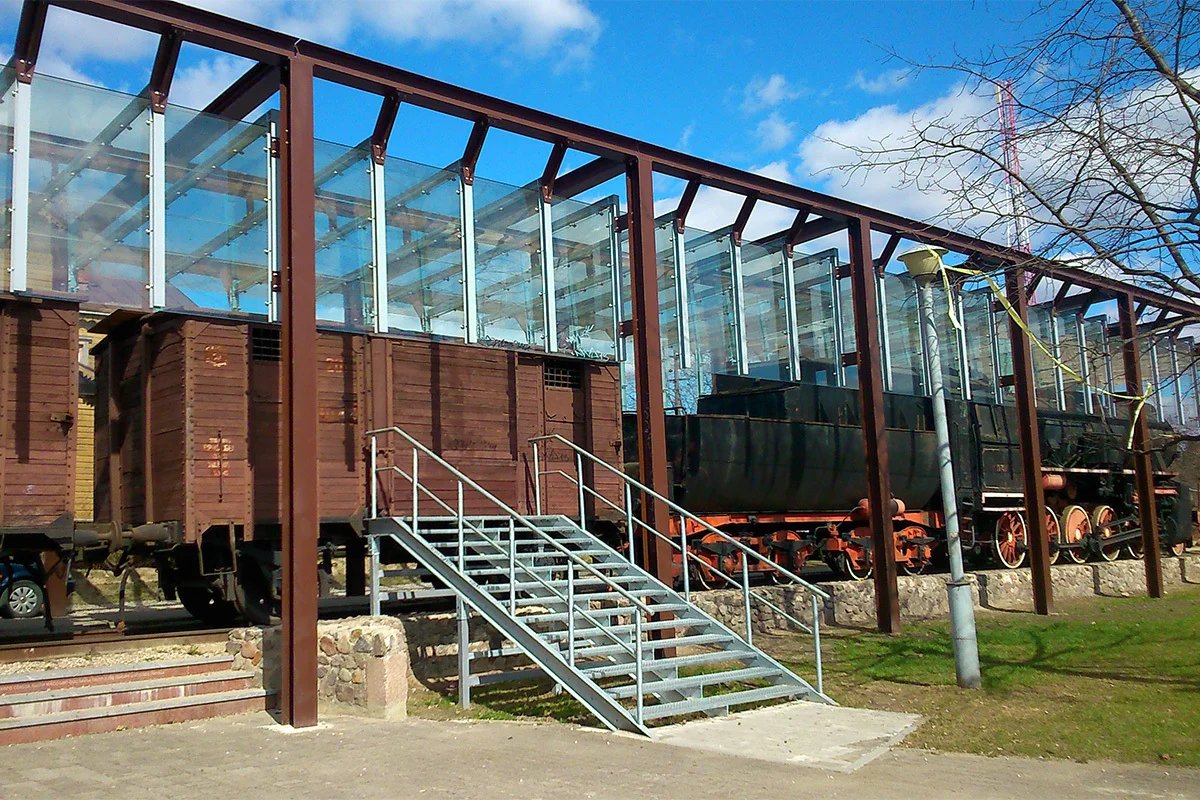
Railway cars used for deportation, photo: ViršuLF / Wikimedia (CC0 1.0 DEED)
Soviet leader Nikita Khrushchev rehabilitated the Chechens, Ingush, Balkars, Karachays and Kalmyks in 1957, but only partially. They were allowed to return home, but without full restitution of their property and rights. Their autonomy within the Soviet Union was restored, but within new borders.
Historian and anthropologist Viktor Shnirelman analysed the conflicts between returnees and “locals” in his 2006 book, To Be the Alans: Intellectuals and Politics in the Northern Caucasus in the 20th Century. The stigmatisation of the former led to them being discriminated against both socially and economically, at times leading to violence. In 1958, an angry ethnic Russian mob stormed a regional committee building in the Chechen capital Grozny following the murder of a local Russian and beat the Chechens and Ingush who worked there, before demanding a fresh wave of deportations.
Conflict also arose between the Ingush and Ossetians over territory on the border between the two republics. The prewar population of the area in question had been overwhelmingly Ingush, but after their deportation, the area was transferred to North Ossetia, and when the Ingush returned, they wanted it back. The conflict simmered for decades. In 1981, after the murder of an Ossetian taxi-driver in an Ingush village, an “Ossetia without Ingush” rally was held in Ordzhonikidze, now Vladikavkaz, the capital of North Ossetia. Armoured personnel carriers were deployed to prevent a pogrom.
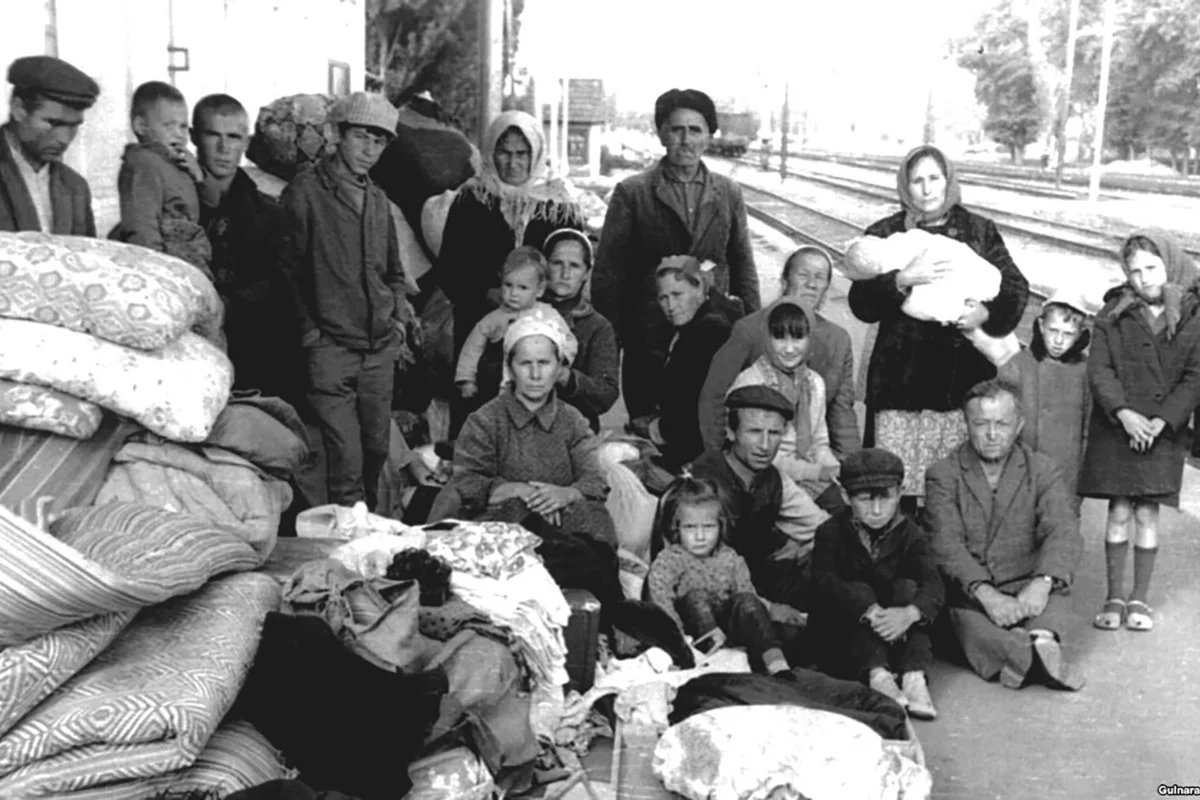
Crimean Tatars arrive in Uzbekistan in 1944. Photo: Wikimedia Commons
Exile had been a traumatic experience, and ill-thought out reintegration schemes and compensation measures only increased friction on the ground.
Yet any public discussion of the deportations was banned. The authorities proposed the “friendship of peoples” principles instead, whereby non-ethnic Russians’ semi-mythical narratives about themselves fused with the “eternally heroic stories” of their ethnic Russian brothers. Stories of wartime glory were no longer limited to 1941–1945, but went back centuries.
For all the talk of a people united by struggle, deportees were nonetheless frequently reminded of their “guilt”. In 1981, Vasily Petukhov, a public prosecutor, published a racist essay, The Case for the Prosecution, which branded all Ingush criminals and Islam a criminal religion.
Yet any public discussion of the deportations was banned.
In the late 1970s, a memorial was erected in Karachay-Cherkessia to local orphans who had been killed by “gangsters and traitors to the Motherland” in World War II. The inscription was eventually changed, but under perestroika, it emerged that there had been no dead orphans in the first place.
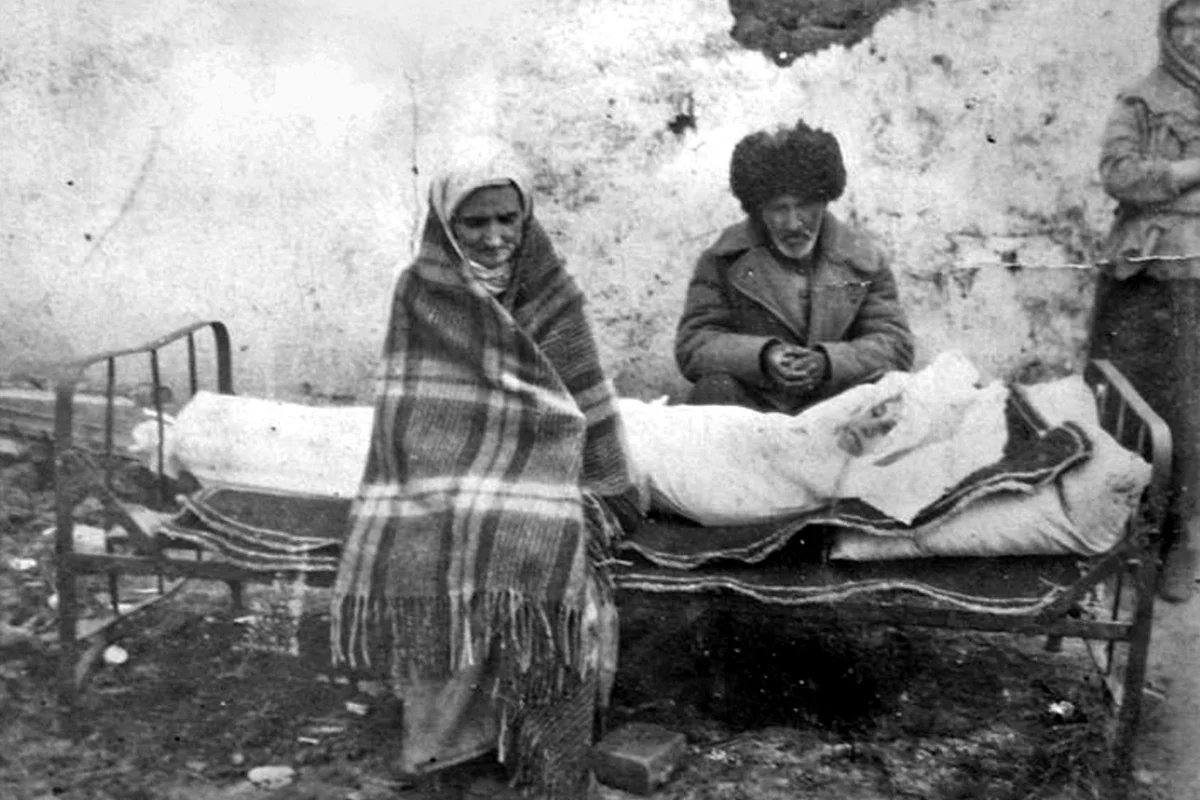
An Ingush family with their deceased daughter. Kazakhstan. Photo: Wikimedia Commons
Minefields
Stalin’s repressions, including the deportations, began to receive greater attention with the arrival of the perestroika and glasnost era in the second half of the 1980s. However, it wasn’t only the democrats that wanted to discuss them. Nationalist and radical movements also used remembrance as grounds to demand autonomy or even full independence from Russia, and began calling the deportations “genocide”.
The growth of nationalism in the North Caucasus in the late 1980s was arguably a direct result of the unwillingness or inability of the Soviet authorities to process Stalin’s deportations. In many respects, this can also be said of the two Chechen wars.
Political scientist Igor Ushparov, who researches collective memory, says of the policy of the 1970s-1980s: “The state managed to establish fear of the Nakh [chiefly Chechens and Ingush] peoples in the Soviet consciousness.” Shnirelman wrote that under perestroika, Stalinists in the local press tried to highlight Chechen guilt and frighten the Russian population within the republic with cautionary tales of a Chechen uprising. The failed putsch against Mikhail Gorbachev by communist hardliners in August 1991 only exacerbated Chechen fears of a fresh wave of deportations, which the leader of the Chechen independence movement Dzhokhar Dudaev used to his advantage.
The growth of nationalism in the North Caucasus in the late 1980s was arguably a direct result of the unwillingness or inability of the Soviet authorities to process Stalin’s deportations
The Yeltsin era made use of Stalinist crimes to juxtapose a newly “free Russia” with “communist tyranny”. In 1994, Yeltsin made a public apology for all the Soviet-era mass deportations. The Balkars received a separate apology to mark the 50th anniversary of their tragedy. Other deportees were less fortunate. For example, ethnic Greeks have never even had their mass deportation formally recognised by the Russian government.
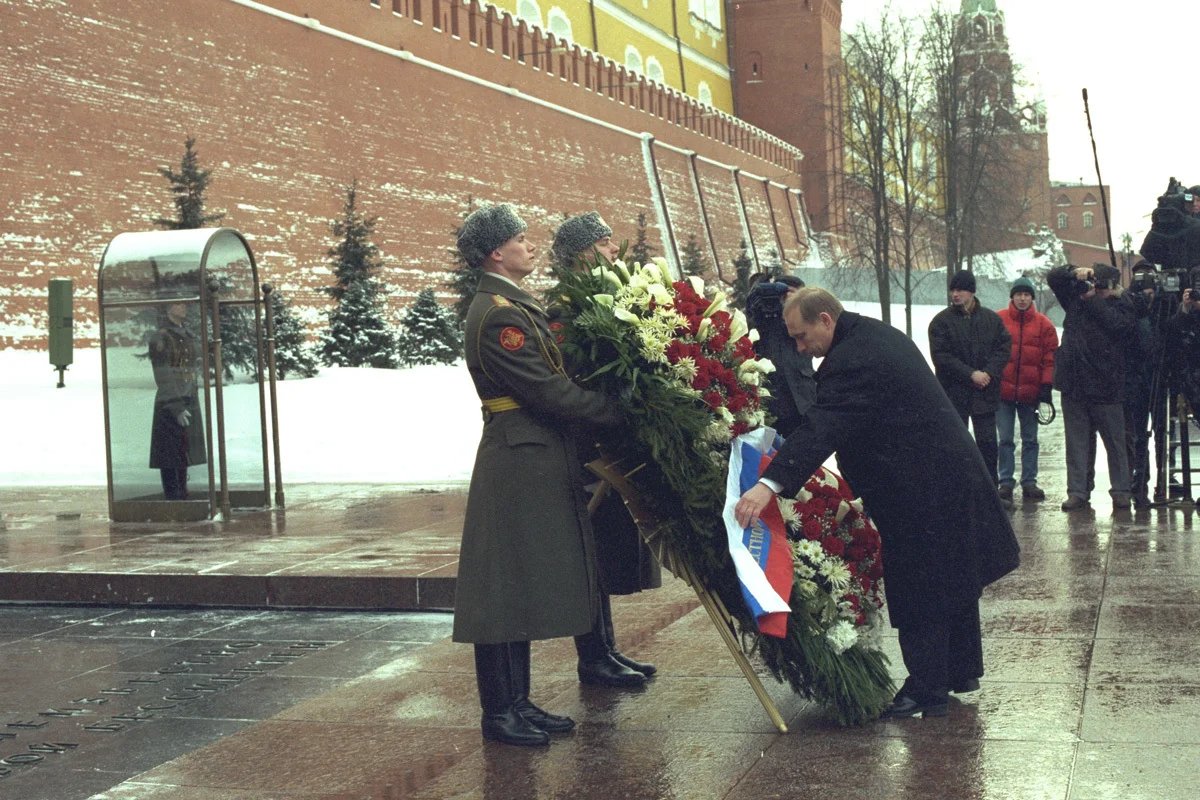
Vladimir Putin honours the victims of Stalinist repression, 23 February 2000. Photo: Antoine Gyori / Sygma / Getty Images
Under Putin, the approach to historical memory has undergone a total overhaul, however, with any aspect of Stalinist oppression that might be used to criticise Putin’s Russia or that undermines the Russian state’s 21st century mythology, being anathema.
Compare but contrast
In Europe, the remembrance of Nazi crimes was driven initially by a desire to catch and prosecute the guilty parties and thereafter by painful discussions around responsibility.
Russia chose another path, however, and the authorities did everything they could to ensure that difficult aspects of the past were never foregrounded and that awkward questions about how to avoid history repeating itself were never posed.
In her 2023 book The 20th Century; Working Through the Past, researcher Yevgenia Lyozina said that, ever since perestroika, Russia’s security apparatus worked to ensure that discussions of victimhood should never lead to lustration. As a result, public discussion was limited to the victims of state crimes, but rarely touched on their perpetrators. This also meant discussion of personal complicity and moral responsibility was never had — Russian society simply avoided speaking about many aspects of its dark past.

A boy holds the Crimean Tatar flag at a demonstration marking their mass deportation in 1944, Yevpatoria, Ukraine, 18 May 2021. Oleksiy Pavlyshak/ Reuters / Scanpix
Terminology is also difficult. There is an increasing tendency to call all large-scale atrocities genocide. But the very concept is controversial. The 1948 UN Convention gives a very narrow definition: the deliberate destruction of a people for who they are, rather than their persecution for economic, military or political reasons. One can distinguish between the “genocide of a people” — the Armenians during World War I — and an “act of genocide” — Srebrenica — but that isn’t entirely satisfactory, as there are many other equally horrendous mass crimes in history which don’t fit either description.
Academics prefer instead to talk about categories of extermination and persecution and categories of victims. This helps to compare and contrast different tragedies so as better to understand what sets them apart.
Comparing, discussing and debating are normal parts of the appraisal of any historical event. But remembrance of such crimes is, at its heart, a protest, awash in blood and tears, against the state’s disposal of human lives as it sees fit.
Join us in rebuilding Novaya Gazeta Europe
The Russian government has banned independent media. We were forced to leave our country in order to keep doing our job, telling our readers about what is going on Russia, Ukraine and Europe.
We will continue fighting against warfare and dictatorship. We believe that freedom of speech is the most efficient antidote against tyranny. Support us financially to help us fight for peace and freedom.
By clicking the Support button, you agree to the processing of your personal data.
To cancel a regular donation, please write to [email protected]
